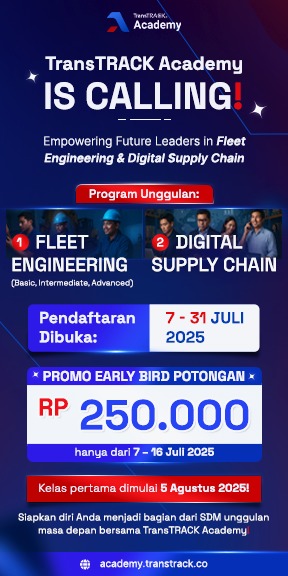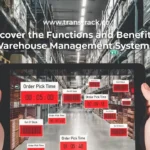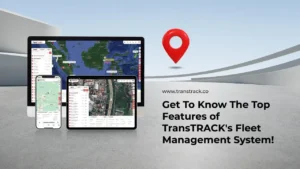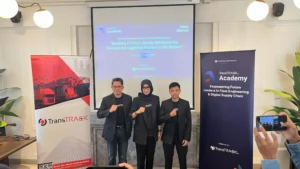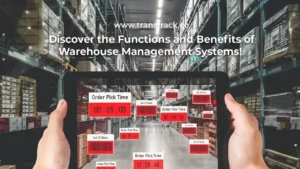Understand What is Cross Docking, Types, Benefits and Challenges
Posted on October 12, 2023 by Nur Wachda Mihmidati

Cross docking is an important strategy to help companies optimize their supply chains. This strategy is usually used by companies operating in the logistics, retail, and export & import sectors.
This strategy is considered effective in reducing delivery time and operational costs. However, implementing this strategy is not that easy. There are many things you need to prepare in implementing this strategy so that it can run smoothly. Are you curious about what cross docking actually is? What are the benefits for business? And what are the challenges of implementing it? Here, TransTRACK provides an explanation for you.
Understanding Cross Docking
Cross docking is a system or strategy in an effective and efficient supply chain. This system shortens delivery times where products are received from suppliers, unloaded from delivery trucks, and immediately loaded onto other delivery trucks without the need to be stored in a warehouse or temporary storage. The goal is to reduce product retention time and speed up the flow of goods from suppliers to end customers.
In other words, cross docking is a method that allows goods to pass through distribution centers quickly and efficiently without having to keep them in stock. This strategy is very suitable for retail and e-commerce businesses whose products have high demand in society.
Types of Cross Docking
There are several types of cross docking that are commonly used by companies, here is a list and explanation:
Common Cross Docking
This type of strategy involves combining products from various suppliers which are then shipped to the final destination. The goal is to combine goods from various sources to reduce final shipping costs.
Specific Cross Docking
This type of strategy involves products that require additional processing before being sent to their final destination. These products usually require sorting, repacking, or quality inspection before shipping. This can ensure the products received by customers are high quality products.
Partial Cross Docking
This strategy will involve a combination of products that are shipped directly to customers and products that require additional processing before shipping. This type allows companies to combine products that are ready to ship with products that require further processing.
Reverse Cross Docking
Different from the previous type, this type of strategy is related to products returned by customers. The returned product will later be received at the cross docking center, inspected, and then processed in accordance with company policy.
Benefits of Cross Docking for Business
Implementing this strategy in business brings a number of significant benefits that can increase operational efficiency, reduce costs and better meet customer demands. Here are some of the main advantages of implementing cross docking:
Reduction in Storage Costs
One of the main benefits of this strategy is reduced storage costs. Because products do not need to be stored in expensive warehouses or storage facilities, companies can save on warehouse management costs, inventory management costs, and security costs.
Increased Operational Efficiency
This strategy helps improve overall operational efficiency. Products arriving from suppliers can be immediately transferred to delivery trucks without significant delays. This allows companies to allocate resources better and increase productivity.
Reducing Product Loss and Damage
Because products are not kept in stock for long periods, the risk of product damage or loss due to excessive handling or extreme weather is minimized. Products transferred from one truck to another also require less handling.
Shorten Delivery Time to Customers
This strategy allows products to reach customers faster. This is especially important in businesses where on-time delivery is a key factor. Customers will be satisfied with faster service, and this can increase customer loyalty.
Challenges of Implementing Cross Docking
Implementing this strategy in business can provide various benefits, but also presents a number of challenges that need to be overcome. To understand in more detail, here is a list of the main challenges one may face while implementing this strategy:
Complex Coordination
This strategy involves careful coordination between suppliers, distribution centers, and transportation. Inefficient scheduling or delays in one stage of operations can cause delays in the supply chain and even failures in these systems.
Product Quality Sorting
Some types of these strategies involve checking and sorting product quality before shipping. Ensuring that the products sent meet quality standards is a challenge in itself, especially if the products come from many different sources and in large quantities.
Required Infrastructure
Effective implementation of this strategy requires appropriate infrastructure. This includes facilities that can handle the fast and efficient flow of goods. Equipment such as conveyor belts, as well as technology systems that support accurate inventory tracking and management may be required.
Employee Qualifications
Having trained and experienced employees in these operations is critical. Selecting and training staff appropriate to their duties in the supply chain is a challenge in itself that requires time, energy and costs.
In a competitive business era, maintaining operational efficiency is the key to success. Cross docking is one strategy that can help your business stay competitive and relevant.
In conclusion, cross docking is an efficient supply chain strategy and has the potential to provide huge benefits for your business. This allows you to reduce storage costs, increase operational efficiency, and provide better service to your customers.
Using the right technology, such as an advanced fleet management system, can help optimize your cross docking operations. One technology that you can adopt to optimize cross docking is the Fleet Management System (FMS) from TransTRACK.
This Fleet Management System technology can provide the necessary visibility into the movement of goods and help avoid possible disruptions in your supply chain. Not only that, with FMS you can also manage your warehouse and fleet more easily and effectively. Visit the TransTRACK website for complete information about the Fleet Management System.
Recent Post
Topic :
 Bahasa Indonesia
Bahasa Indonesia


